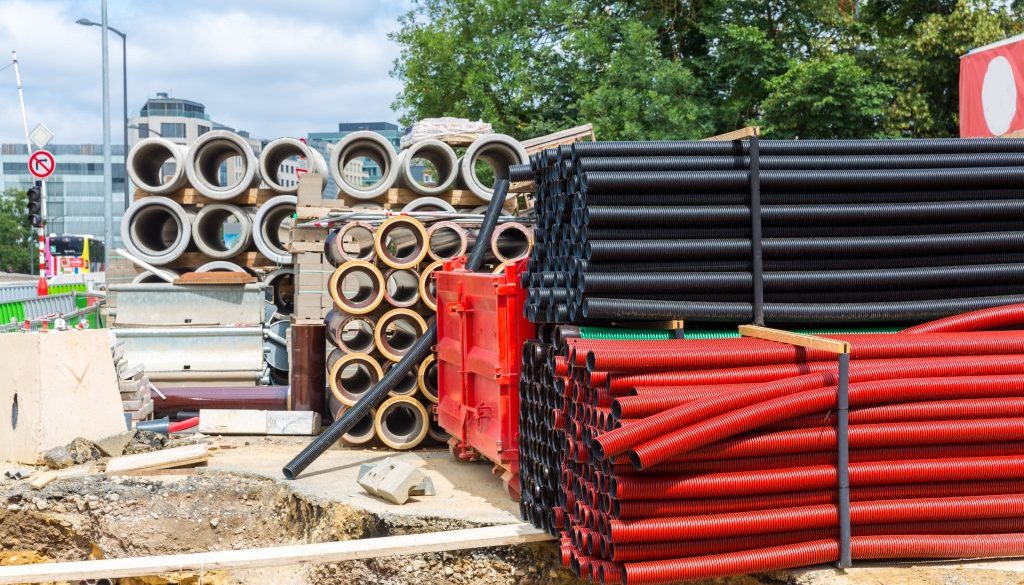Sustainable Construction Materials: Embracing Eco-Friendly Building Practices
As society becomes increasingly aware of the environmental impact of construction and development, there is a growing demand for more sustainable building practices and the use of eco-friendly construction materials. Sustainable construction materials help reduce waste generation, lower energy consumption, and decrease a building’s carbon footprint. In this blog post, we delve into the world of sustainable construction materials, their benefits, and the role they play in creating a more eco-friendly and responsible building and construction industry.
Sustainable construction materials range from natural and renewable resources to those that can be recycled or reclaimed, all contributing to a reduction in the environmental impact of construction projects. By integrating these materials into your next building and construction project, you can not only demonstrate a commitment to sustainability but also improve the overall performance and efficiency of your structure. Key factors to bear in mind when considering sustainable materials include their durability, resource efficiency, and ability to contribute to a comfortable and healthy indoor environment.
In the sections that follow, we will examine the various types of sustainable construction materials, the advantages they offer over traditional building materials, and the practical ways in which they can be incorporated into your project. By understanding the benefits of sustainable construction materials and adopting eco-friendly building practices, you can make a positive impact, both on the environment and on the long-term performance of your construction project.
Sustainable Construction Materials: Embracing Eco-Friendly Building Practices
Types of Sustainable Construction Materials
A variety of sustainable construction materials are available for use in eco-friendly building practices, each with its unique benefits and applications:
– Recycled Concrete: Reclaimed from demolition projects, recycled concrete can be reused as aggregate for new concrete mixes or as a substitute for natural aggregate in various construction applications.
– Reclaimed Timber: Salvaged from deconstructed buildings or fallen trees, reclaimed timber preserves the natural resource of forests and can be repurposed for flooring, structural framing, or cladding.
– Insulating Materials: Sustainable insulation materials, such as cellulose or sheep’s wool, provide effective thermal performance while minimising energy consumption and the use of non-renewable resources.
– Green Roofs and Walls: Incorporating vegetation on roofs and walls promotes biodiversity, improves air quality, and enhances thermal performance.
Advantages of Sustainable Construction Materials
The use of sustainable construction materials offers numerous benefits over traditional building materials, both environmentally and in terms of building performance:
– Reduced Waste Generation: By repurposing or recycling materials, waste destined for landfills is significantly reduced, supporting a circular economy in the construction industry.
– Lower Carbon Footprint: Sustainable materials often have a lower embodied energy and smaller carbon footprint compared to traditional construction materials, contributing to reduced greenhouse gas emissions.
– Enhanced Building Performance: Integrating sustainable materials can improve the overall efficiency, thermal performance, and comfort of a building, resulting in lower operational costs and increased occupant satisfaction.
– Positive Environmental Impact: The use of sustainable construction materials supports biodiversity and ecosystems, reduces resource depletion, and minimises the pollution associated with resource extraction, production, and disposal of conventional building materials.
Practical Incorporation of Sustainable Materials in Construction Projects
Implementing sustainable construction materials into your project requires thoughtful planning and consideration of the following factors:
– Design: Incorporate sustainable materials during the design phase, ensuring that they are compatible with the desired building performance, aesthetic, and maintenance requirements.
– Material Sourcing: Select sustainable materials from local, reputable suppliers, such as Enviro Skip Hire, to minimise transportation emissions and support local economies.
– Adaptability: Consider the potential for future reuse or recycling of the materials when designing your building, ensuring optimal flexibility for adaptation or deconstruction.
– Building Regulations: Ensure that the use of sustainable construction materials complies with applicable building codes, material specifications, and performance standards.
Promoting Sustainable Construction Practices Beyond Material Use
Adopting sustainable construction materials is just one aspect of a more holistic approach to eco-friendly building practices:
– Waste Management: Implement effective waste management strategies during construction, such as recycling and responsible disposal through a reputable skip provider like Enviro Skip Hire.
– Energy Efficiency: Incorporate energy-efficient technologies and passive design strategies into your project to minimise energy consumption and reduce associated emissions.
– Water Conservation: Utilise water-efficient fixtures and fittings, and incorporate rainwater harvesting systems to reduce the demand for freshwater resources during and after construction.
– Environmental Impact Assessment: Conduct an environmental impact assessment (EIA) during the planning phase to identify potential environmental risks and inform the development of mitigation measures.
Conclusion
The use of sustainable construction materials is an essential element of eco-friendly building practices, offering an opportunity to reduce the environmental impact of our built environment and create long-lasting, efficient structures. By understanding the types, benefits, and practical applications of sustainable materials, builders and architects can contribute to a greener and more sustainable construction industry.
Whether you are in the early planning stages of your construction project or evaluating potential sustainable materials, incorporating eco-friendly building practices is key to fostering a better future for both our planet and its inhabitants. Partner with trusted suppliers like Enviro Skip Hire to access the sustainable materials you need and embark on a responsible construction journey that contributes to a healthier, more resilient, and sustainable built environment.




